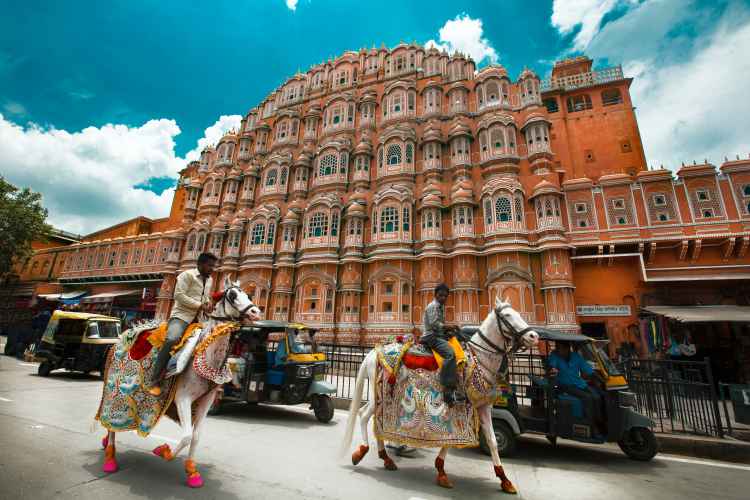
Road accidents in Rajasthan surged by 13% in 2022, accompanied by an 11% increase in fatalities. The latest data released by the Rajasthan Department of Transport and Road Safety show that the number of accidents rose to 23,614 in 2022 compared with 20,951 in the previous year. Particularly worrying is the high number of deaths related to two-wheeler accidents which account for most road fatalities in the states. Official records indicate that 4,782 deaths were recorded in such accidents, marking a 13% increase from 2021. One of the prime culprits for the rise in accidents and fatalities is the lack of political will to enforce road safety measures adequately.
During the budget speech on February 10, 2023, the Chief Minister unveiled plans to establish district road safety task forces with the ambitious goal of reducing road accident mortalities by 50% by 2030. This target aligns with the Sustainable Development Goals, specifically, target 3.6. Subsequently, the state government issued an order to set up these task forces.
READ | Health cards for all can transform India’s public health system
Each task force will be led by the district collector and comprise 14 members including the police superintendent, chief medical and health officers of the district, commissioner of the local urban body, and the chief district education officer. According to the order, these task forces will convene once every three months to ensure continuous awareness of road safety guidelines, schemes provided by the state and central governments, safety audits of state and national highways, and the timely implementation of mitigation measures.
Road accident scenario
In 2022, India recorded a staggering 1,55,622 deaths due to road accidents, with a significant 59.7% of these fatalities attributed to over speeding. Alarmingly, 62% of these accidents occurred on just 5% of the highways, indicating an urgent need for preventive measures on these stretches.
According to a report released by the ministry of road transport and highways (MoRTH) in 2022, Rajasthan was among the top 10 states with the highest number of accidents in the country in 2021. This position has persisted for several years, and the eagerly awaited MoRTH road safety report of 2022 is yet to be published. Rajasthan also secured the unenviable fourth place in terms of the highest fatalities reported across the country, highlighting the severity of the issue.
Enforcement and consequences
The severity of road accidents, measured by the number of persons killed per 100 accidents, increased from 36 in 2020 to 37.3 in 2021. Alarmingly, this upward trend in accident severity has been persistent since 2000, with approximately 60% of states reporting accident severity rates higher than the national average.
In 2021, over speeding accounted for a staggering 71.7% of road accidents, 69.6% of total deaths, and 72.9% of total injuries. During the same period, 46,593 individuals lost their lives due to non-compliance with helmet regulations, with 70.6% being riders and 29.4% passengers. Similarly, approximately 16,397 people lost their lives due to the failure to wear seat belts, with 51.5% being drivers and 48.5% passengers. These figures underscore the critical need for stricter enforcement of traffic regulations.
Regional road safety concerns
States such as Uttar Pradesh, Maharashtra, Gujarat, Rajasthan, and Andhra Pradesh have consistently reported higher accident rates and fatalities than the national average, signaling the urgency of addressing road safety at a regional level. For instance, in 2021, the accident severity rate (deaths per 100 accidents) in Rajasthan stood at 48, significantly higher than the national average of 36.
Hope in success stories
Despite these grim statistics, certain districts within Rajasthan have demonstrated that positive change is achievable with the right commitment and dedication from officials. In 2021, five districts — Pali, Karauli, Baran, Jalore, and Jhalawar — succeeded in reducing accident mortalities through rigorous enforcement. Pali district, in particular, achieved an impressive 16% reduction in the death rate following accidents. Key officials at the district level, especially the District Transport Officers (DTO), played pivotal roles in these transformations. All districts that managed to reduce fatalities were awarded Rs 10 lakh during Road Safety Week 2023, funds intended for further enhancing road safety measures.
In contrast, 2022 saw five districts report fewer road accidents, while two districts reported no change. Unfortunately, most districts experienced an increase in accidents and deaths, with over 10 districts reporting increases exceeding 20%. Surprisingly, districts like Pratapgarh, Swai Madhopur, Bhilwara, Chittorgarh, and Jalore — where a significant number of road safety awareness programmes were conducted — also witnessed substantial increases in injuries.
These outcomes emphasise that stringent enforcement can lead to a reduction in road accident fatalities and incidents. Therefore, it is crucial to study the factors and actions implemented in successful districts and replicate them elsewhere.
The focus on revenue collection
Concerns have been raised regarding the transport department’s focus. Reports indicate that during a review meeting at the end of June 2023, officials were directed to work on monthly target-based revenue collection for the department. It is essential to clarify that strict enforcement’s primary goal is not to boost government revenue but to save lives within the transportation system.
A comprehensive road safety plan
Like the global Decade of Action for Road Safety 2021-2030, which seeks to reduce road deaths and injuries by 50% by 2030, Rajasthan needs a comprehensive ‘Rajasthan State Plan of Action on Road Safety 2024-2030.’ This plan should be integrated into the Chief Minister’s Rajasthan Vision 2030.
The Road Safety Plan of Action should align with the global initiative, emphasising a holistic approach to road safety by improving road infrastructure, enhancing laws and their enforcement, and providing timely, life-saving emergency care for the injured. Furthermore, it should promote sustainable mobility through policies for Non-Motorized Transport (NMT), such as dedicated walking trails, cycling tracks, and environmentally friendly public transport options. This plan should establish yearly targets with specific indicators to monitor progress effectively.
Need for a state road safety authority
In Rajasthan, the Road Safety Cell at the Department of Transport and Road Safety is the lead agency for road safety. However, it currently lacks statutory powers to ensure better coordination among various departments and agencies related to road safety and road management. Multiple committees, such as the Chief Ministers’ High-Power Committee on Road Safety, Cabinet Sub Committee on Road Safety, State Road Safety Council, Chief Secretary Traffic Management Committee (TMC), and Traffic Control Board (TCB) of Jaipur Development Authority (JDA), exist alongside the Road Safety Cell.
This complex structure underscores the need for a single agency that can effectively coordinate and manage all road safety affairs. The Rajasthan Road Safety Bill 2022, yet to be enacted, provides detailed provisions for the establishment of a State Road Safety Authority, a long-standing demand for the effective implementation of the Motor Vehicles Act. This authority should oversee the implementation of the Rajasthan State Plan of Action on Road Safety 2024-30.
The bottom line is that with the will, commitment, and strict enforcement, Rajasthan can indeed achieve its ambitious 2030 road safety target, ultimately saving lives on its transportation network.
George Cheriyan is Director of Centre for Environment and Sustainable Development India, a national NGO in Special Consultative Status with UN-ECOSOC, and accredited with UNEP & UN ESCAP. CESDI is also a member of South Asia Network on SDGs.

